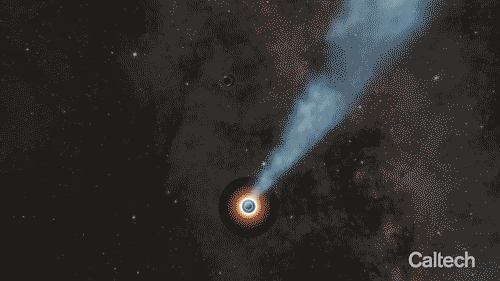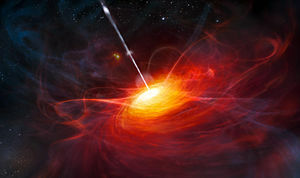Two Black Holes are locked in a cosmic dance near the galaxy’s center are doomed to crash. Once in every 10,000 thousand years two black holes collide and create a massive effect on the universe.

Researchers have found in a study that two huge black holes are locked with each other because of gravity. and they are inevitably spiral towards a collision.
In a new space study, Researchers have spotted two massive black holes that move around each other every two Earth years. Its time is on average is more massive than our Sun( hundreds of millions of times more). The team also found out that these two black holes are very close to each other. The two black holes are only 2000 Earth-Sun distance apart.
The massive objects are only separated 50 times less than the distance between our Sun and Pluto. Scientists are excepting a titanic collision between these two black holes that will shake space and time by sending gravitational waves across the universe.
This whole scenario will take place within a super energetic object named quasar.
A quasar is a very bright luminous active galactic nucleus powered by a supermassive black hole. Quasar radiant energy on a super level. According to studies, there are millions of quasars in the galaxy. The nearest quasar is 600 light-years away from our earth.

A team of astronauts has discovered that in some quasars the supermassive black hole creates a jet that shoots out near the speed of light. The quasar observed in this study, PKS 2131-021 belongs to a family of blazars quasars in which the jet is targeting towards the earth. Scientists already knew that quasars could possess two orbiting supermassive black holes.
The team believes that PKS 2131-021 is a second supermassive black hole captured in the camera after OJ 287. They think PKS 2131-021 will only take two years to complete an orbit.
The main evidence of this incident has come from observing the PKS2131-021, which spans every 45 years. According to the study, one of the two massive black holes is creating a powerful jet. Due to the pair’s orbital motion, PKS 2131-021 is shifting back and forth. Because of this, the quasar’s radio light is changing periodically. Researchers think that the combination of radio data will help them to find out more about our universe and its mysteries.
Sandra O’Neill, lead author of the new study says,” When we realized that the peaks and troughs of the light curve detected from recent times matched the peaks and troughs observed between 1983, we knew something very special was going on.”
According to the researchers of The National Science Foundation’s LGO, which is managed by Caltech and MIT, all galaxies possess black holes in their core. Our own Milky Way galaxy also possesses a black hole. As these two black holes spiral towards each other, they are creating disturbance between space and time. The theory was first predicted by Albert Ernestine. However, this study is published in The Astrophysical Journal Letters.
For more interesting updates, visit geeksultd.



